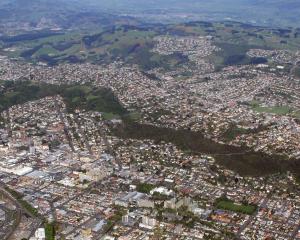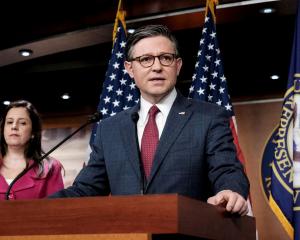The third anniversary of the Pike River Mine disaster has been marked this week, with progress on some fronts, much debate on others, and still little in the way of comfort for the families of the 29 men killed in the November 19, 2010, explosions.
Progress has undoubtedly been made in implementing the 16 recommendations made by the Royal Commission on the Pike River Coal Mine tragedy in its report which was released in November last year. The Health and Safety (Pike River Implementation) Bill last week
passed its third reading in Parliament, creating the WorkSafe New Zealand Act, the Health and Safety in Employment Amendment Act and a new Mines Rescue Act.
The Government has established WorkSafe New Zealand, a stand-alone Crown agent with its own governance board, as the new workplace health and safety regulator - one of the key recommendations of the commission.
The health and safety functions of the Ministry of Business, Innovation and Employment (the Department of Labour was the health and safety regulator at the time of the Pike River disaster) will transfer to the new agency from December 16.
Labour Minister Simon Bridges said the legislation was the last major milestone in work to address the recommendations and that it ''paves the way for new mining health and safety regulations, and an expanded and better-supported Mines Rescue Service'', other recommendations of the commission.
The ministry's Pike River Implementation Update shows there are further codes of practice and protocols to be drawn up over the next two years, but certainly significant work to improve health and safety in the mining sector and the country's many other workplaces and industries has been done and is being implemented.
And so it should.
The commission slammed the Department of Labour's record as the former health and safety regulator, describing its performance in relation to the mining industry as ''Third World'' and ''poor both at the strategic and operational levels''.
The fact it took such a horrific accident to push Government departmental change is a tragedy in itself.
For the bereaved families of the 29 men who died, progress has been painfully slow. It was only in September that the Government approved conditional funding of a $7.2 million partial mine re-entry plan to try to recover the victims' bodies.
Work to do so has begun, with the Defence Force removing debris from the ventilation shaft, which is now being plugged, and is hoped to be completed by Christmas.
The Government funding has at least given the families some hope, the possibility of closure, and even if unsuccessful, is an important acknowledgement of responsibility and gesture of goodwill. Unfortunately, that has not been extended to the ongoing issue of compensation.
Pike River Coal was found guilty in April of nine charges laid by the former Department of Labour under the Health and Safety in Employment Act and, in sentencing in July, Judge Jane Farish fined the company $760,000 and ordered reparation of more than $3.41 million - $110,000 for each of the 29 victims and the two survivors.
With the company in receivership, and parent company New Zealand Oil and Gas declining to pay, the families sought support from the Government in light of the commission's findings regarding its culpability, and hoped it would do the right thing ''morally''.
They were dealt a blow last week
when the Government ruled out making any such payment, saying there was no legal obligation to do so, and it would set a precedent with taxpayers' money in terms of workers of other failed companies.
The debate is likely to continue, with Labour leader David Cunliffe this week promising his government would pay compensation if elected, and then seek to recover the money from Pike River Coal's parent.
As audio of the last communication with mine workers was publicly released this week, and other audio and a photograph of the body of one of the men leaked to media, it must feel one step forward, one back for the families, whose emotional trauma and day-to-day difficulties continue.
After three years, it is understandable they feel there is little light at the end of the tunnel for them.











